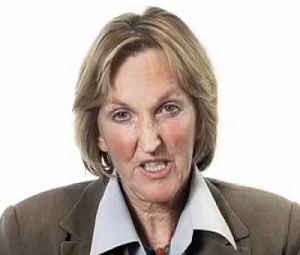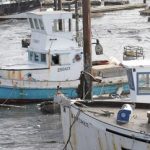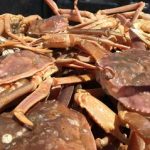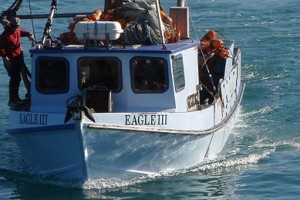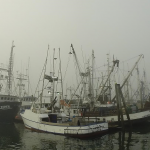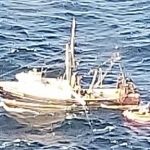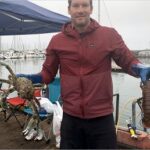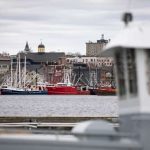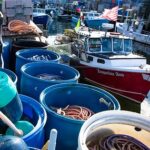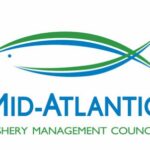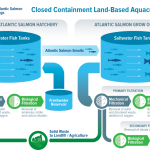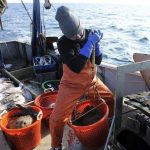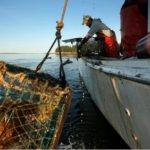Category Archives: Mid Atlantic

Commercial Fisherman Scott M. Boyce Sr., of Belford, New Jersey
Scott M. Boyce Sr., 61, a lifelong resident of Belford, passed away May 30 at home. Scott was born Oct. 26, 1958 in Red Bank, a son of the late Norma and George Boyce. Scott was a commercial fisherman with the Belford Seafood Co-op. He and his brother Brian owned and operated the fishing boat The Linda. Scott is survived by his devoted wife of 32 years, Ann Boyce, along with their son Scott Boyce Jr. Scott also leaves behind his brother and sister-in-law, Brian and Ronnie Boyce; nephews, Brian and Heron; and nieces, Lauren and Ivy. He was predeceased by his brother George Boyce. >click to read< 14:18
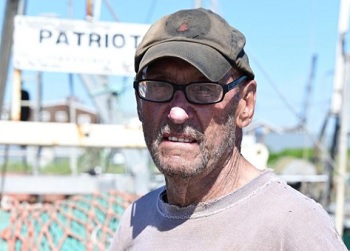
Long Island Coronavirus Hangover: Fishermen’s business remains in the doldrums even as restaurants reopen
While many local fishermen sell to local retailers, a steady local business even through the pandemic, the lion’s share of local fish go to companies that distribute to restaurants throughout the region and across the country. Three months of lockdowns over the coronavirus has backed up the market for the products, leaving warehouses for local frozen fish such as squid fully stocked, while drastically reducing demand for local clams and oysters..,, The summer is normally a prime time for fishing trawlers that harvest squid, said Greenport commercial fisherman Mark Phillips, but the market has been backed up by months of shutdowns and a closure of some export markets, including to China. Phillips said he was hopeful the start of restaurant reopening increases demand for squid, his primary fishery right now. >click to read< 07:47
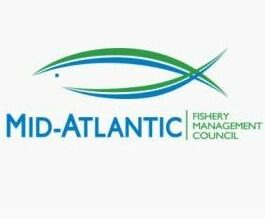
Reminder: June Webinar Mid-Atlantic Fishery Management Council Meeting, June16th-17th
Due to public health concerns related to the spread of COVID-19, the Mid-Atlantic Fishery Management Council’s June meeting will be conducted by webinar only.,, The Mid-Atlantic Fishery Management Council will meet via webinar this week, June 16-18, 2020. The agenda, briefing materials, and other details are available on the June 2020 Council Meeting web page. Participants are encouraged to review the June 2020 Webinar Guide for step-by-step instructions for joining the webinar, connecting your audio, commenting and voting procedures, and troubleshooting tips. >click to read, with plenty of links!< 14:38
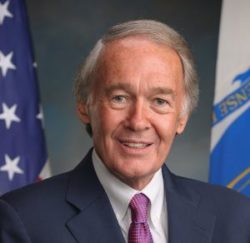
Fighting for fishermen on a bi-partisan, bi-coastal basis during Coronavirus crisis – Senator Ed Markey
Restaurants have shuttered and large export markets have been disrupted. Fishermen have lost access to critical points of sale and sources of income. With a decreased demand for fresh seafood, many boats sit idle in port. Meanwhile, boat payments are due and families need to be fed. In the U.S. Senate, I have been fighting on a bipartisan basis alongside Sen. Elizabeth Warren and Alaska senators Lisa Murkowski and Dan Sullivan to secure dedicated economic assistance for the fishing and seafood industries in COVID-19 economic relief packages. Thankfully, this bi-coastal effort got results. The Coronavirus Aid, Relief, and Economic Security (CARES) Act, enacted into law on March 27, included $300 million in assistance for fishery participants and $9.5 billion for affected agricultural producers. >click to read< 12:22
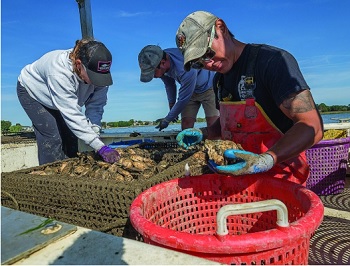
Maryland’s wild oyster harvest doubles from last year
Despite having fewer days to work, Maryland watermen harvested nearly twice as many wild oysters last season as they did the previous year, state officials report. Even so, a new study finds the state’s population of bivalves is in much better shape now than it was two years ago, with abundance up and overfishing down. As a result, state fisheries managers say they’re weighing whether to maintain catch restrictions put in place last season or relax them for the next wild harvest season, which normally begins Oct. 1. Data presented Monday night to the Department of Natural Resources’ Oyster Advisory Commission indicates that the overall abundance of adult, market-size oysters in Maryland’s portion of the Chesapeake Bay has rebounded considerably since 2018 and is now at the fifth highest level since 1999. >click to read< 17:01
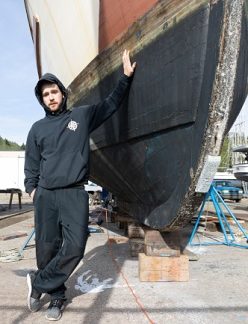
Fishermen’s Superstition’s: No bananas! No Whistling! But above all, it’s bad luck to be superstitious!
Luke Whittaker set out to learn whether there are superstitions that live on among local fishermen. Here’s what he heard. Jerry Matzen III, commercial fishermen “Hang your coffee cup mouth towards the stern so you don’t sink. And no whistling in the wheelhouse or cabin — otherwise you’ll whistle up a storm, like we are having today. I learned the coffee cup one from Kerry Suomela Sr. when I worked on the F/V Southern Cross and it always stuck with me.” Tim Teall, commercial fishermen “Well, to begin with, you never want to paint your boat green because it’ll beach itself in a storm. Never set a coffee cup or a bucket on the boat upside down — the boat will roll over! Don’t whistle in the wheelhouse, because it’ll make it get windy out. But above all, it’s bad luck to be superstitious!” >9 photos, click to read<10:41
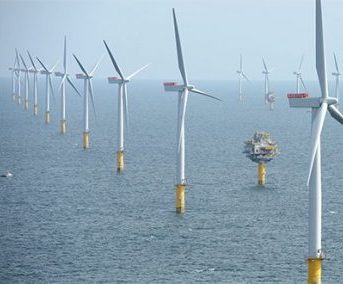
Here you go, Fishermen. Feds see 2,000 East Coast turbines over 10 years
The U.S. Department of the Interior’s Bureau of Ocean Energy Management (BOEM) this week issued a supplement to its draft Environmental Impact Statement (EIS) for the 800-megawatt Vineyard Wind I project, a joint venture of Copenhagen Infrastructure Partners and Avangrid Renewables seeking to build an 84-turbine wind farm 15 miles south of Martha’s Vineyard. A 45-day public comment period begins Friday. “This supplement analyzes reasonably foreseeable effects from an expanded cumulative activities scenario for offshore wind development, previously unavailable fishing data, a new transit lane alternative, and changes to the proposed Vineyard Wind 1 Project,” the document says. >click to read< 10:06
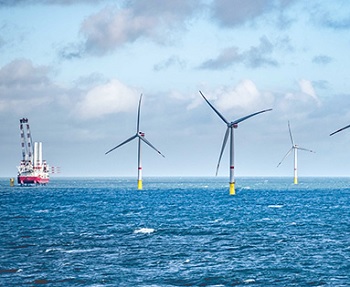
Offshore wind to have major ‘adverse’ effects
Offshore wind farms could have a major “adverse” impact on commercial fisheries, according to a long-awaited analysis from the Interior Department released yesterday. The Bureau of Ocean Energy Management’s draft supplemental environmental review for Vineyard Wind, the first anticipated large-scale wind project in the United States, arrives nearly a year after a final decision on the project was expected. BOEM delayed a final environmental analysis at the eleventh hour last summer and announced the launch of the supplemental review, arguing that the rapid expansion of offshore wind proposals and coastal state wind procurement policies necessitated a broader examination of wind’s foreseeable impacts >click to read< 14:37
RODA Receives NMFS Grant to Convene State of the Science Symposium on Fishing and Offshore Wind Interactions – The Responsible Offshore Development Alliance (RODA) has received a $150,000 grant from the National Marine Fisheries Service (NMFS) to aggregate existing knowledge, then convene a first-of-its-kind symposium on the current science regarding fisheries and offshore wind interactions. The project, “Understanding the State of the Science,” will advance agency, fishing industry, offshore wind energy developer, and public understanding of existing research on interactions between the two industries. >click to read<
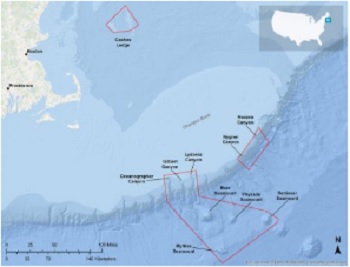
Trump Rights a Wrong by Opening Marine Monument to Commercial Fishing
President Trump used the occasion of a visit to Maine last week to do right by an industry that hasn’t had much good news lately when he reopened to commercial fishing nearly 5,000 square miles of ocean south of New England that President Barack Obama closed in 2016. Stay tuned. In the process of righting a wrong,,, Obama created the area, known as the Northeast Canyons and Seamounts Marine National Monument, just a few months before he left office. He portrayed the monument, the only one in the Atlantic, as a hedge against climate change.,,, Obama also >considered the area around Cashes Ledge<, 80 miles off Rockland, for monument status, which would have been devastating for Maine fishermen. Ultimately, he took a pass, but environmentalists have not given up on the idea. By Jerry Fraser, >click to read< 08:00
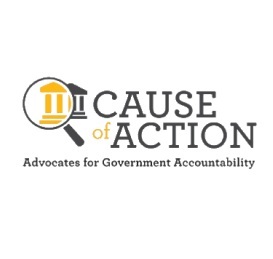
Family Fishermen Move to Block Industry-Killing At-Sea Monitoring Rule
Cause of Action Institute (CoA Institute) today filed a motion for summary judgement on behalf of a group of New Jersey fishermen, asking a D.C. Federal Court to vacate job-killing fisheries regulations called the “Omnibus Amendment.” CoA Institute filed suit in February to challenge the industry-killing rule, which requires certain boats in the Atlantic herring fishery to carry “at-sea monitors” at their own cost. The Omnibus Amendment—designed by the New England Fishery Management Council (NEFMC) and finalized by the National Oceanic and Atmospheric Administration and the Department of Commerce—is expected to cost fishermen upwards of $700 a day, leading to a projected 20% drop in returns-to-owner (profit). Not only is this industry already overregulated, but the agencies are forcing this unlawful rule upon fisherman without any statutory authority to do so. >click to read< 15:25
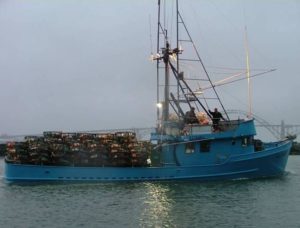
Oregon Fishing Industry Tells Lawmakers Of Economic Hardships – Murkowski pushes for an another Billion in federal fisheries relief funds
The coronavirus has hit Oregon’s commercial fishing industry hard. That was the message to state lawmakers during a recent meeting of the House Interim Committee on Natural Resources. Anthony Dal Ponte is with Pacific Seafood, which is based in Clackamas and has several facilities on the Oregon coast. He said the company had to lay off more than 500 employees after their restaurant and hospitality industry markets dried up virtually overnight. >click to read< Meanwhile, Murkowski pushes for an additional $1 billion in federal fisheries relief funds – Additional money could 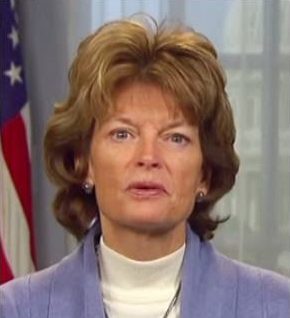 be on the way for the fishing industry. Senator Lisa Murkowski said that she is working to add more fisheries funding in the next round of pandemic relief legislation. “As we think about the impact to our fisheries, $50 million is not going to be sufficient to address the need,” she said. “I have been working with colleagues to urge us in this next round of relief to include $1 billion in fishery assistance funds.” >click to read< 15:07
be on the way for the fishing industry. Senator Lisa Murkowski said that she is working to add more fisheries funding in the next round of pandemic relief legislation. “As we think about the impact to our fisheries, $50 million is not going to be sufficient to address the need,” she said. “I have been working with colleagues to urge us in this next round of relief to include $1 billion in fishery assistance funds.” >click to read< 15:07
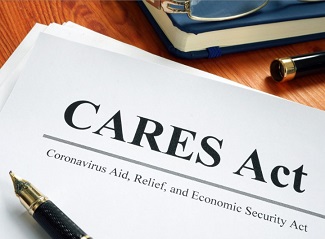
Commercial Fisheries and Fishermen Can Apply for CARES Relief But Not Yet
On May 7, the Secretary of Commerce announced the allocation of $300 million in fisheries assistance funding provided to states, tribes, and territories with coastal and marine fishery participants who have been negatively affected by COVID-19. As a next step, the National Oceanographic and Atmospheric Administration will use these allocations to make awards to its partners – the interstate marine fisheries commissions, Puerto Rico, and the U.S. Virgin Islands – to disburse funds to address direct or indirect fishery-related losses as well as subsistence, cultural or ceremonial impacts related to COVID-19. But relief may take some time. No funds have yet been made available to the Atlantic States Marine Fisheries Commission or states. The N.J. Department of Environmental Protection staff is working diligently to develop a spending plan and application process that must be approved by NOAA. >click to read< 11:07
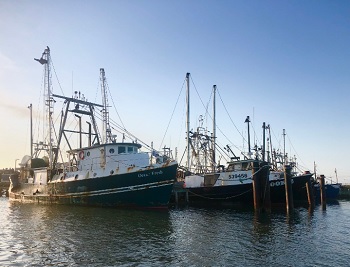
Fishermen Finding Windows Of Opportunity, Necessity Opened By Coronavirus
“Guys are getting creative,” said Edward Warner Jr., a commercial bayman from Hampton Bays. “You have some guys going on the internet and selling and going to the green markets in the city more. Different people are trying different things to make few bucks here and there.” Before the epidemic, the majority of fish landed by local boats was simply packed in waxed cardboard boxes, topped with crushed ice and trucked into New York City’s central seafood market in Hunts Point, Brooklyn.,,, In mid-March, when restaurants and thousands of other businesses were ordered to close, and people scrambled to pack into their homes and venture out as little as possible, prices for fish cratered. >click to read< 12:25
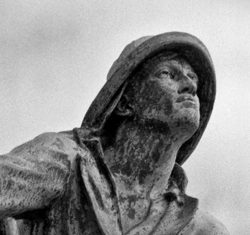
NOAA – Their mission
Back in the sixties when I was fishing with my dad we would fish about a one hundred miles east of New Bedford for whiting in the spring. We had a ninety foot dragger. And there were Russian vessels there that were three hundred foot and they were using a small mesh net that caught everything in the water. At the time there was no 200 mile limit. The Russians and other foreign vessels could come into our waters and were restricted to within fifteen miles of our coast. Today no one knows how much damage they did but our fisherman would eventually pay the price. Finally in 1978, we enacted the 200 mile limit. That was great so we thought, but we created a monster. That being NOAA. >click to read< Thank You, Sam Parisi 08:52
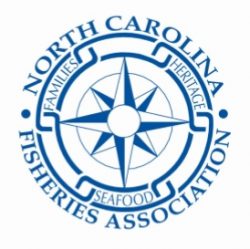
Always NC Fresh! NC Commercial Fishing Resource Fund Launches New Campaign, NCFA Weekly Update for May 22, 2020
Glenn Skinner, Executive Director of NC Fisheries Association (NCFA) and NCCFRF Committee Member, stated, “The Always NC Fresh public relations campaign could not have come at a better time as many of our fishermen have been hit hard by the impacts of COVID-19.” Skinner added, “Commercial fishing has been a part of North Carolina’s coastal communities and economy for hundreds of years, and it was time for us to reintroduce our fishermen to the citizens of this great state. We have a great story to tell and we’re proud to be a part of this new campaign.” “Commercial fishermen are good people who are a fundamental part of the economy and way of life in North Carolina’s coastal communities,” said Brent Fulcher, NCFA Chairman. >click to read< 08:04
North Carolina Fisheries Association Weekly Update for May 22, 2020 – >click to read< to read all the updates >click here<, for older updates listed as NCFA >click here<
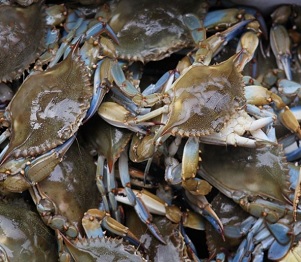
Female Blue Crab Population Up In Chesapeake Bay, Juvenile Numbers Low
Chesapeake Bay blue crab population appears to have a healthy number of spawning-age female crabs, according to the 2020 Blue Crab Winter Dredge Survey. Maryland, Virginia and the Potomac River Fisheries Commission aims to conserve more than 70 million adult female crabs annually to ensure enough young crabs can be produced to sustain the population, a task that has now been achieved for the sixth consecutive year. This year’s survey estimates 141 million adult female crabs were conserved, which is above the long-term average of 126 million. The total amount of blue crab in the Chesapeake Bay in 2020 was 405 million crabs,,, >click to read< 14:56
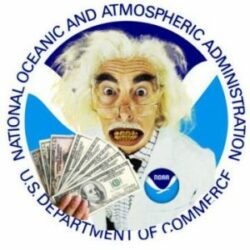
Eight Projects Selected for S-K Funding – Here we go again! Fisherman get the shaft, thanks to NOAA
To those fisherman who put in an application for Saltonstall-Kennedy Program Funding money, I feel badly for you who were not selected. Again, NOAA gave the money to universities, foundations, and other special interests and not you, who it should be for. Unfortunately for those who applied, this has been going on for years under NOAA’s selection of those that apply. I believe when authored by Senators Leverett Saltonstall (R-Mass.) and John F. Kennedy (D-Mass.) in 1954 to promote and market domestic seafood, that they didn’t think our fisherman would be left out. Two years ago, I was chosen by NOAA to serve on a panel to review those who applied.,, by Sam Parisi, >click to read< including the press release. 19:12

Captain David Vincent Haynie Sr., Reeadville Va.
David Vincent Haynie, Sr., age 81, of Reedville died Sunday, May 17 from complications of lung cancer. He was predeceased by his father and mother, Capt. E. Vincent Haynie and Frances Armsworthy Haynie. He is survived by his wife of 41 years, their children and grand children, family, and friends. His maritime career began at age 16 rowing the striker boat on his father’s menhaden fishing vessel in Lewes, DE. He owned and was captain on his trawler F/V Lady Jennifer operating from Texas to New Hampshire. He was a menhaden fish spotter from 1965 to 1974 and a well respected captain serving on numerous menhaden vessels for 31 years on the Chesapeake Bay, North Carolina and the Gulf of Mexico. >click to read< 07:56
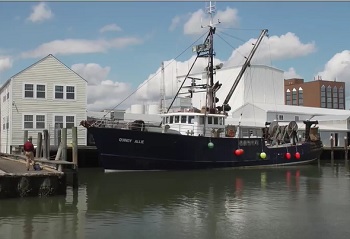
‘I Don’t Know if We Will Make It’: Fishing Industry Takes a Huge Hit from Coronavirus
Commercial fishing is one of the many industries suffering from the impact of the COVID-19 pandemic. It’s led to a dramatically shrinking market for seafood as restaurants either close or have converted to takeout, and consumers stay home. It’s a quiet scene these days at L.D. Amory & Co. in Hampton, Va. The normally bustling wholesale seafood packer is struggling. “About 80 percent of the product we pack here ends up in restaurants,” Meade Amory, vice president of the company, told CBN News. “And so far we have no markets for our products right now, and it’s been very difficult.” Video, >click to read< 10:34
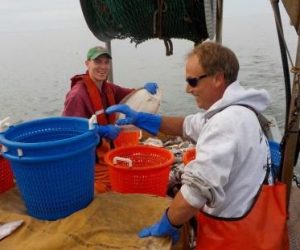
The Northeast Observer Waiver Has Been Extended Through 5/30/2020!
NOAA Fisheries is extending the waiver granted to vessels with Greater Atlantic Region fishing permits to carry human observers or at-sea monitors for an additional two weeks, through May 30, 2020. Administrator authority to waive observer requirements, and is also consistent with the criteria described in the agency’s emergency rule on observer waivers during the COVID-19 pandemic. NOAA Fisheries will continue to monitor and evaluate this situation. As we have done in other parts of the country, >click to read< 15:04
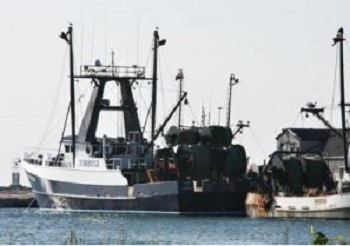 Coronavirus: The country is shutting down. Shutdown NOAA’s Fisheries Observer Program, nationally. Right Now. – 06:06 March 20, 2020, I am writing this editorial today as a responsible, conscientious American fishermen and citizen, in complete disbelief of the irresponsibility of a U.S. government agency during the current international coronavirus crisis. >click to read<
Coronavirus: The country is shutting down. Shutdown NOAA’s Fisheries Observer Program, nationally. Right Now. – 06:06 March 20, 2020, I am writing this editorial today as a responsible, conscientious American fishermen and citizen, in complete disbelief of the irresponsibility of a U.S. government agency during the current international coronavirus crisis. >click to read<
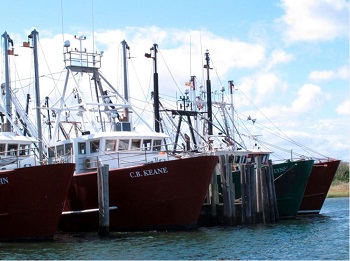
New Jersey commercial fishing operations counting on relief funds to stay in business
The Garden State Seafood Association is hoping the $11 million recently allocated to New Jersey’s seafood industry as part of the coronavirus stimulus law will prepare it for reopening. “The money should go to those businesses that have a proven negative impact from the COVID pandemic and should be used to help keep as many fishing businesses in operation as possible,” Scot Mackey, the Garden State Seafood Association (GSSA) Government Affairs director based in Trenton, told The Center Square. “I am concerned that the dollars seemed to flow to states regardless of the impact of the pandemic,” Mackey said. “I don’t think Alaska seafood has experienced the same impact as … the East Coast.” >click to read< 12:37
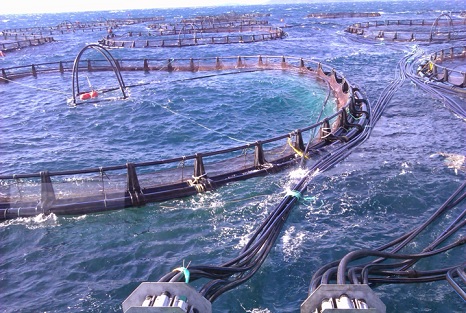
Trump Executive Order Opens the Door for Massive Industrial Fish Farms in Oceans
Last week, the Trump administration announced an executive order opening the door for large-scale fish farming. That order, as reported by the Food and Environment Reporting Network (FERN), is designed at its core to expand the scope and facilities for aquaculture. What that likely means is a reduction in regulations, and the creation of large offshore fish farms.,, While offshore fish farms would be a boon to major seafood corporations, smaller fishermen would be harmed by it in several ways. Those environmental effects could deplete the health of wild waters, which fishermen depend on. They could also flood the market with cheaper farmed fish, harming the demand for more sustainably caught seafood. >click to read< 08:04

Dock to Dish 3.0: Online system gives Montauk fleet direct distribution to consumers on Long Island and the NY Metro Area
Montauk’s fishermen have launched a historic and innovative new initiative to deliver fresh, New York State-certified seafood straight from their boats to local residents’ doorsteps. The effort, called Dock to Dish 3.0, comes just in time, as restaurant closures and stay-at-home orders have hurt traditional distribution channels and put perishable catches in danger. Dock to Dish 3.0 is now operating locally as a pilot program for Montauk area residents, offering no-contact subscriptions via an e-commerce platform, with deliveries eventually expanding in June to reach more than 1,000 customers around Long Island and the NY Metropolitan Area each week. >click to read< 10:38
Long Island fishing industry takes a hit during pandemic – On Tuesday morning, commercial fishing boats sat idle in the water at the Montauk town dock—an uncommon sight, especially this time of year. But lately, it’s become the new normal. >click to read<

Just in! Reminder: Black Sea Bass Commercial State Allocation Amendment Webinars – Today @ 2:00 p.m. and Thursday @ 6:00 p.m.
Reminder: Mid-Atlantic Council to Hold Two Scoping Webinars for Black Sea Bass Commercial State Allocation Amendment, Monday, May 11, 2:00 – 3:30 p.m. Thursday, May 14, 6:00 – 7:30 p.m. The Mid-Atlantic Fishery Management Council will hold two scoping webinars to gather public input on a management action to consider potential modifications to the allocations of the black sea bass commercial quota among the states of Maine through North Carolina. Learn more about this action in the scoping announcement or at the links below. Links, and info. >click to read< 13:35
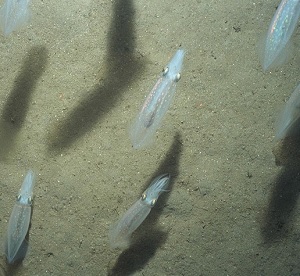
Squid Fishery Responsible for Over 2,500 Jobs, $240 Million in Economic Impact in New England and Mid-Atlantic region
Fishing for longfin squid brings in tens of millions of dollars in annual revenue and supports thousands of full-time jobs, according to a new study from the Science Center for Marine Fisheries (SCEMFIS). “Loligo squid is a significant part of our business and is also a Marine Stewardship Council-certified, sustainable fishery with its products in demand in the U.S., Europe and Asia,” said Jeff Kaelin, Director of Sustainability and Government Relations for Lund’s Fisheries, in Cape May, New Jersey. “This study shows the extent to which our fishery has grown in size and economic importance, which needs to be considered by both fishery and wind-energy regulators making decisions impacting our future.” >click to read< 16:44
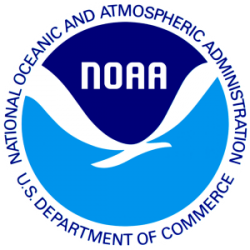
Commerce Secretary Announces $300 Million CARES Act Allocation – NOAA will disburse funds through partners
As a next step, NOAA Fisheries will use these allocations (see below) to make awards to our partners—the interstate marine fisheries commissions, Puerto Rico, and the U.S. Virgin Islands—to disburse funds to address direct or indirect fishery-related losses as well as subsistence, cultural, or ceremonial impacts related to COVID-19. “We are going to rely primarily on our partners at the interstate marine fishery commissions during the award process because they have a demonstrated track record of disbursing funds provided to them quickly and effectively,” said Chris Oliver, Assistant Administrator for NOAA Fisheries. Read the Summary of Allocations, and review the question and answer section. Q. Who should affected fishermen and communities contact about accessing this funding? >click to read< 11:00

President Donald J. Trump Executive Order Promoting American Seafood Competitiveness and Economic Growth
By the authority vested in me as President by the Constitution and the laws of the United States of America, and in order to strengthen the American economy; improve the competitiveness of American industry; ensure food security; provide environmentally safe and sustainable seafood; support American workers; ensure coordinated, predictable, and transparent Federal actions; and remove unnecessary regulatory burdens, it is hereby ordered as follows: DONALD J. TRUMP, THE WHITE HOUSE, May 7, 2020. >click to read<
President Donald J. Trump Is Working to Secure America’s Seafood Supply Chain and Bring Jobs Home – >click to read< 17:54

U.S. Department of Commerce Announces Availability of $1.5 Billion in CARES Act Funds to Aid Communities Impacted by the Coronavirus Pandemic
U.S. Secretary of Commerce Wilbur Ross today announced that the Department’s Economic Development Administration (EDA) is now accepting applications from eligible grantees for Coronavirus Aid, Relief, and Economic Security Act (CARES Act) supplemental funds (EDA CARES Act Recovery Assistance) intended to help communities prevent, prepare for, and respond to coronavirus.,, On March 27, 2020, President Donald J. Trump signed the $2 trillion CARES Act into law. The CARES Act provides EDA with $1.5 billion of which $1.467 billion is available for grant making. The remaining funds will be transferred to cover salaries and expenses and oversight activities. >click to read< 12:54






